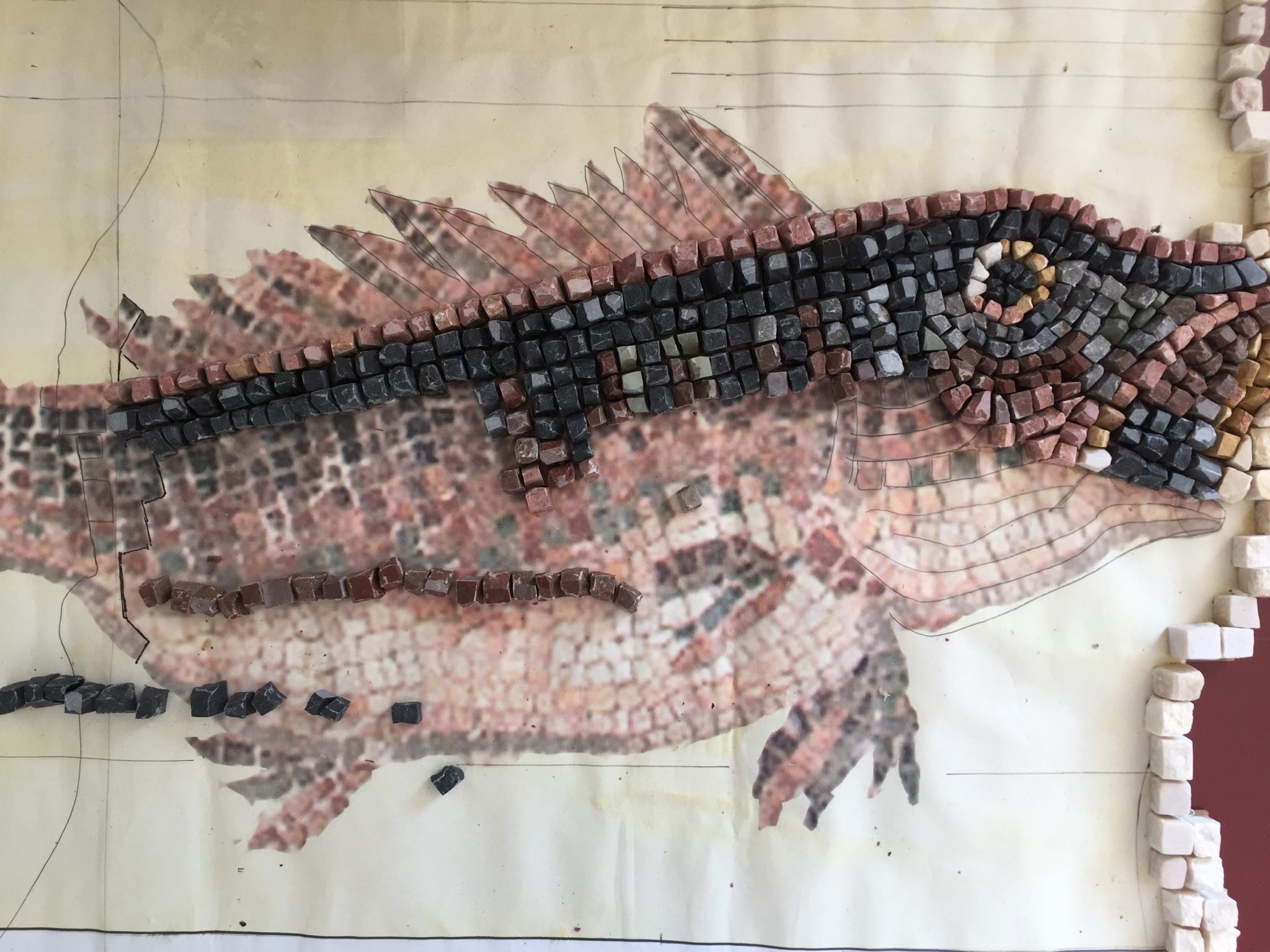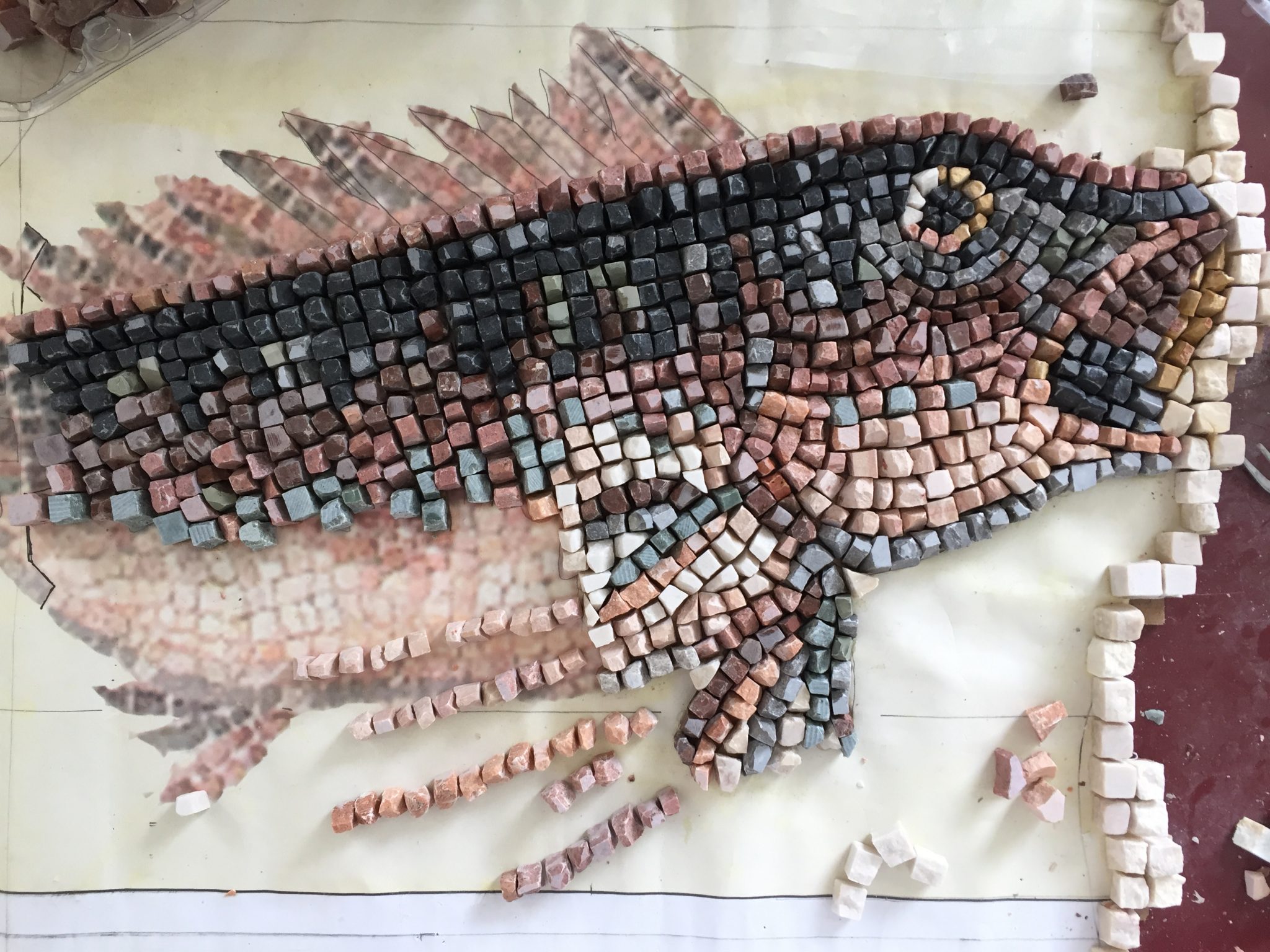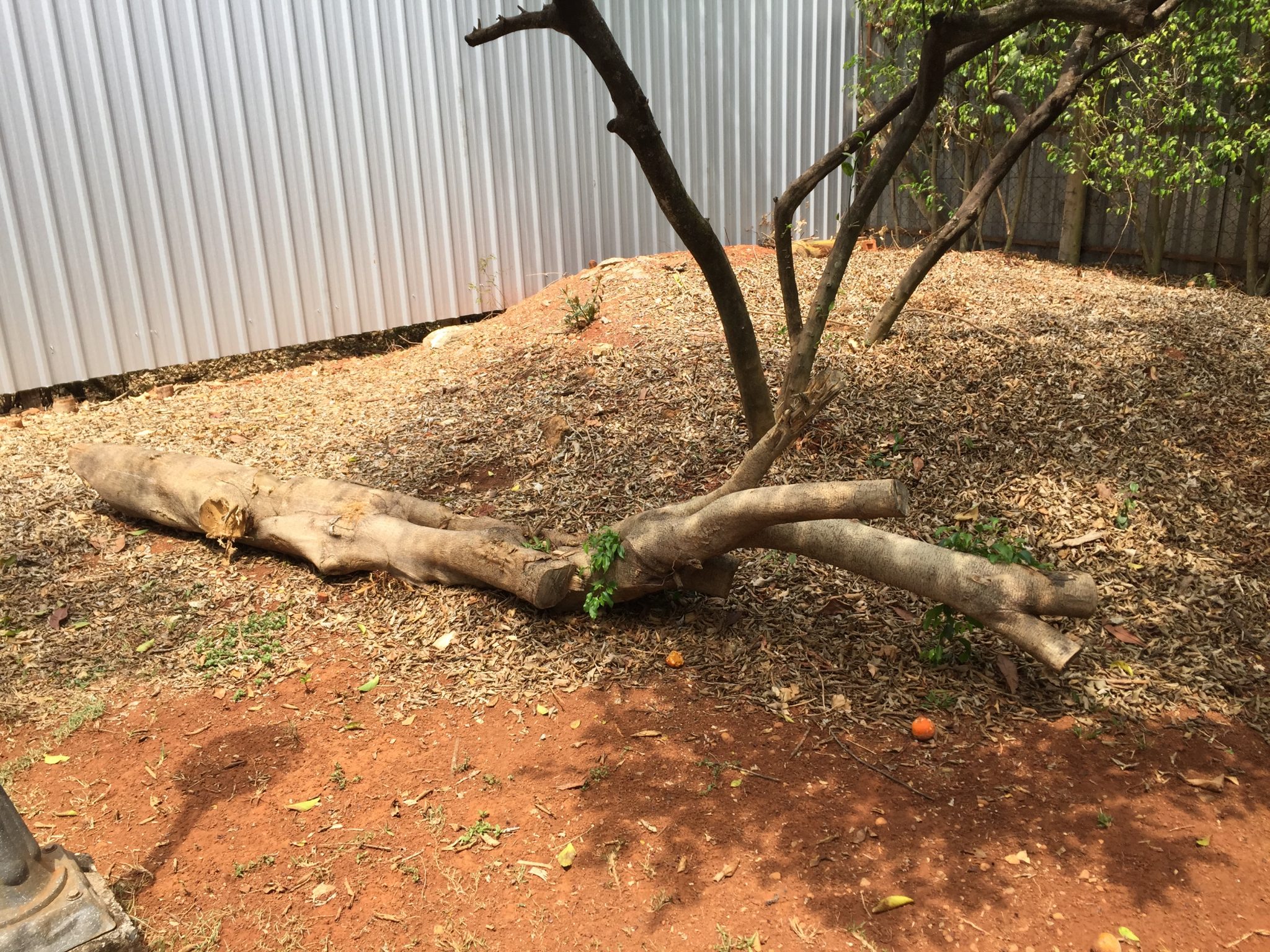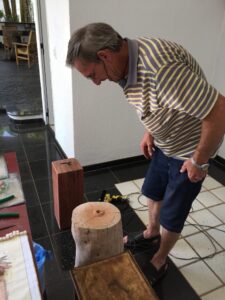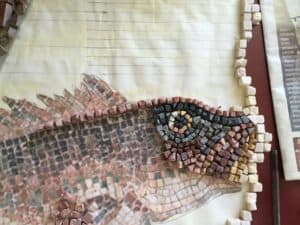And taking the kids on a beach holiday for a week, receiving 322 boxes with our household goods, unpacking, arranging furniture, hanging pictures and lamps, going to Portuguese classes 3x a week & homework, cheering at kids football and basketball games, finding out which apple juice they like amongst 15 varieties, getting lost in the city with the car, meeting with new people, maybe potential new friends?, visiting some of the famous buildings in Brasilia designed by Oscar Niemeyer ….
Latest Posts
THE AYVALIK MOSAIC – Brasilia studio third week
This week it happened:
An aquaintance of Martin from the German embassy gave us the contacts for Hans, a plumber from Germany who works in the Embassy as a security guard. I called him to install our washing machine. Of course I could have taken a local plumber – but how would I have talked to him!
Whilst Hans and I are waiting that the dashing new washing machine finishes her trial run he offers me all sorts of services for connection with the worlds far away, phone and internet installation, German TV, but I wonder if he could help cutting that tree trunk that lies around in our garden and seems to be perfect to become a stand for the hardie!
Hans knows the gardener Benno who also works in the embassy and comes from the community living in the south of Brasil that emigrated to Brazil from the Hundsrück, a region with a strong German accent near Frankfurt/Main.
So Hundsrück – German – speaking Benno arrives at our house at the weekend and looks at the tree. He considers it not good enough for a stable foot to hold the bangs of the hammer. But he apparently has two pieces of trunks in his house and he would come back next day to bring them.
And look, there he is the next morning: with two beautiful tree trunks in perfect hight, out of interesting tropical wood. Within half hour he has drilled the hole and the hardie sits firm in the wood waiting to patiently cut millions of tesserae again.
THE AYVALIK MOSAIC – Brasilia studio second week
We only have one table in the house as our furniture shipment has not arrived yet. But the family needs it for eating, homework, emailing and chatting! So I can impossibly use it for the very dusty work on the AYVALIK MOSAIC.
I need to go to get my own table.
This cries for a trip to the builders market.
Hmmm! Where is the builders market and how do I get there? Google maps would help but how can I talk to the shop assistants ?
I hate to expose myself again to the situation of not being able to communicate with the society I am living in. But what can I do? I will not be able to keep working on the mosaic if I stay in the house.
Martin lends me his driver and off we go in our car. I insist on driving, because I want to practice, and he directs. But, I did not take into account that can not understand what he says, so we end up stopping at every crossroad until I have understood if to go right or left. Awkward!
The builders market is relatively easy to manage because its like an big builders market in Europe. With the help of the driver and the extremely patient and friendly shop assistant I manage to find what I want. On the way back, with a work top and legs in the car, I let him drive to not to get into such an impossible situation again!
So, there is potential that the work on THE AYVALIK MOSAIC can go on in Brazil: The studio has a table!
The table is set up under the Porch with a lovely view into the garden.
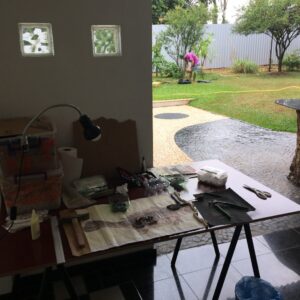 Light is a bit of a problem as it drops pitch dark within 30min after 6pm (we are near the equator). I have bought an extra good work lamp which gives very good light also for seeing color for this situation but it is in our shipment which who knows will arrive. So an ordinary lamp from the builders market will do!
Light is a bit of a problem as it drops pitch dark within 30min after 6pm (we are near the equator). I have bought an extra good work lamp which gives very good light also for seeing color for this situation but it is in our shipment which who knows will arrive. So an ordinary lamp from the builders market will do!
I start enthusiastically but realize that at first I can not work in the evenings as the mosquitoes and termites are disturbing my concentration to much by hovering around the lamp and my head and falling into the glue and on the tesserae, its impossible to work .
… and secondly I have not found somebody that could help me sawing the tree trunk into pieces that readily lys in our garden for installing the hardie. Without the hardy I can not cut the hard limestone from the Euphrates.
Doing all this and arranging my portuguese lessons are tiring me out for this week! At the weekend I am sick!
